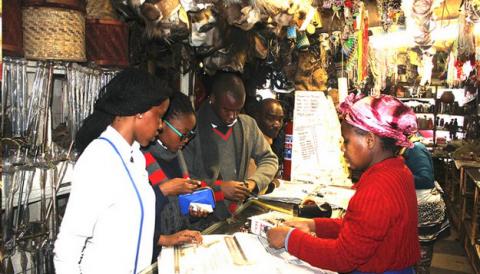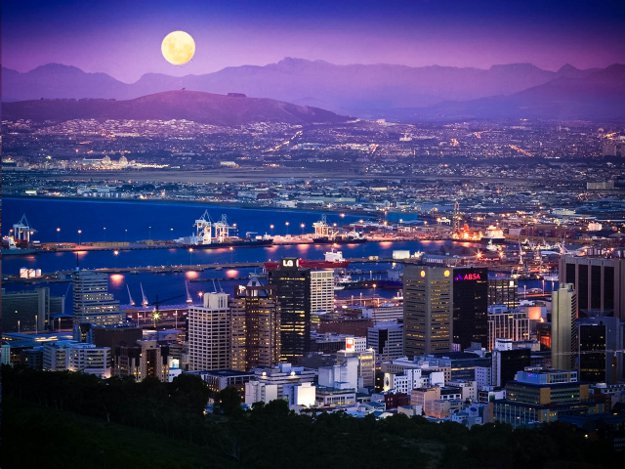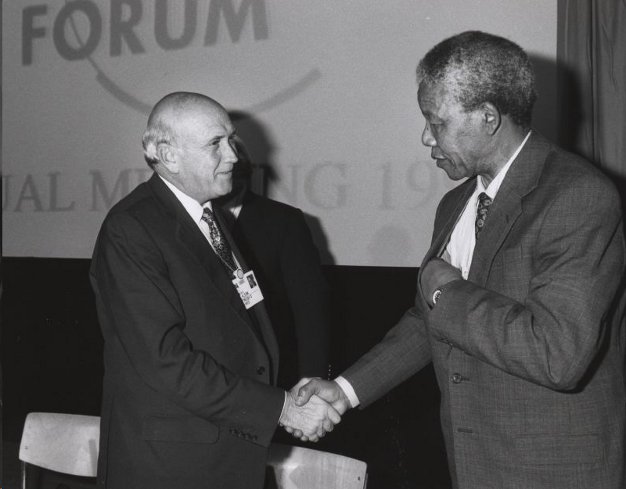How South Africa Is Still Emerging From the Dark Shadow of Apartheid

On a recent trip to South Africa, I arrived in Johannesburg bleary-eyed from nearly 24 hours of traveling that culminated in an overnight flight from London, but also excited to discover a new part of the world. It was my first time visiting the country, a place that had found itself in the spotlight many times in recent decades, for both good and bad reasons—most recently for the World Cup soccer tournament that had taken place there, where the prevalence of the vuvuzela, a plastic horn with a discernable and arguably unpleasant sound, overshadowed the event itself, especially for those watching on television. Having been one of those viewers, I became fascinated with South Africa, so much so that I decided to plan a trip there, forgoing the traditional tropical vacation for an opportunity to experience the people and culture of the country firsthand. Armed with the knowledge that a journey like this may have been inadvisable or even impossible 10 years earlier, especially for someone traveling alone, I arrived at my hotel and attempted to check in to my room.
As it was only 11 o’clock, the front desk clerk informed me that my room was not yet ready. Expecting that this would be the case, I asked the clerk if he might recommend a place nearby for lunch, since I had had nothing to eat but airplane food in the last day. It was the clerk’s response to this inquiry that would set the tone for my entire two-week stay in South Africa. The clerk said, rather matter-of-factly, that he would not recommend exploring the area on foot, as it was not safe and could make me vulnerable to a mugging or worse. I was in disbelief. Looking out the windows of the third-floor hotel lobby, I could see nothing but what seemed like a normal day in a big city—the sun was shining and the sidewalks were teeming with pedestrians. No one was being attacked that I could see, and coming from New York City, it was not as though I was unfamiliar with the potential for crime in an urban setting. Add in the fact that I had pre-paid for four nights in this hotel and was not keen on losing the money I had spent to relocate to a part of the city that may be considered safer, I found I had to make an important decision right off the bat, one that would determine how I approached every situation I encountered during the time I was in South Africa. Perhaps it was partly my naïveté, partly my sense of adventure—or a combination of both—but I chose there and then not to heed the clerk’s warning. I left my valuables in my luggage behind the front desk, and ventured out into the chilly but sunny morning.
This story may cause one to wonder—what exactly has changed in South Africa in recent decades? Almost no one would dispute the fact that the abolishment of Apartheid was a positive thing, but since that momentous occasion in 1994, how has life improved for the residents of such a racially divided country? As previously stated, South Africa has found itself in the international spotlight many times in recent years, but for every good news story there is also a story that paints the current situation in the country in a negative light. Even the trial of Oscar Pistorius, covered so thoroughly by the international media, has a racial undertone when viewed within the context that it took place. Comparing these events to the recent string of racially charged incidents that have taken place in the United States, is it fair to say that to a certain extent, despite the differences in the historical events of both countries, the racial tensions that exist in both are really not that different.
It does not take long for an outsider visiting South Africa for the first time to observe the racial divide that still exists. Many of the types of places created by the segregation of Apartheid—such as the townships consisting of makeshift residences constructed with corrugated tin—still exist, some only a short distance from the major urban centers of big cities like Johannesburg and Cape Town. A trip to one of the upscale malls that are appearing all over the country is unlikely to paint an accurate picture of diversity for travelers, while the tin townships themselves—aside from Soweto township in Johannesburg, which is known for the anti-Apartheid demonstrations that took place there, making it somewhat of a tourist destination—are more likely to be driven past, visible from the country’s highways, than ventured into by outsiders. Other areas within cities—areas such as the Hillbrow section of Johannesburg, notable mostly for its high crime rates and considered by some residents to be practically lawless—are saddled with a recommendation from travel guidebooks that visitors avoid them entirely.
After my initial encounter with the clerk, I was determined to understand why he would make such a statement, and beyond that, prove that he was just being overly cautious. I had grown accustomed to standing out, having traveled all over the world to many places where I am obviously a foreigner, so that was not an issue for me. But as I left the hotel I was admittedly on high alert. I was staying in the area of Johannesburg known as the CBD, or Central Business District, which I would come to learn, is overrun with people during the day before converting to a ghost town at night after the day’s business has concluded.

I passed a Mugg & Bean, South Africa’s slightly higher-end equivalent of Starbucks, complete with waiter service and hot food options, until I came across a grocery store and later, a small shopping complex crowded with workers on their lunch break. I had the opportunity to do some shopping after grabbing my much sought-after meal, wondering the whole time when I would begin to witness the lawlessness that the clerk had described.
In search of some clarity, I decided to visit the Apartheid Museum in Johannesburg. I knew that this mentality of fear must have a context, so I thought if I could learn some of the history of South Africa—particularly its political history—I might understand why the clerk gave me such advice. The entrance to the museum is separated into two doors; one is prominently labeled that it is for whites only, while the other entrance is for everyone else. While visitors are not meant to have to adhere to these entrances, it serves as a perfect illustration of the institutional segregation that used to exist in South Africa.
The museum is filled with photographs and videos that capture moments of struggle and violence as the citizens fought for equality. There is also a section of the museum dedicated entirely to Nelson Mandela, including a replica of the cell that served as his home for the majority of his imprisonment. In the hours that I spent exploring the museum and learning about some of the darkness that makes up South Africa’s history, the clerk’s warning started to make sense—the people that witnessed Apartheid firsthand still carry the scars.
Returning to the Oscar Pistorius trial, it is important to note the context of the events of the night the incident occurred, as it serves as a useful illustration of the tensions that still exist in South Africa. On Valentine’s Day of 2013, Pistorius fatally shot his girlfriend Reeva Steenkamp through the closed door of the bathroom of the home they shared together, fearing she might be an intruder. Whatever culpability Pistorius might have in this event, one fact that was underreported by the news media was that the Olympian—a member of the wealthy white upper-class of South Africa—lived in a heavily guarded and fortified community, designed to protect citizens from what they perceive to be the unsavory elements that exist on the other side of the walls.

These exclusive communities can be found all over South Africa, further perpetuating the racial divide created by decades of unequal treatment and segregation, despite efforts in recent years to move away from the policies of Apartheid. Whether or not Oscar Pistorius was telling the truth is not meant to be decided here; rather, this is only meant to be used as an example that fear stemming from pre-conceived notions of race is still rampant in South Africa, something the international media failed to accurately report to those around the world without an understanding of the current state of things in that country.
While visiting Cape Town, I had the opportunity to tour Robben Island, the location of the real prison cell Nelson Mandela had been held in. While the entire experience was compelling and somewhat surreal, one of the most interesting aspects of the tour was that the guides are actual former prisoners of Robben Island. They volunteer their time as a way to accurately convey the horrors of that period of South Africa’s history to outsiders who may only know what they have read in books or seen on television, distanced from the reality of the situation. They also do it, however, as a way to make peace with the past, and to show that both forgiveness and progress are possible—by returning to the place where they experienced such horror, it serves as a symbol of hope that South Africa can move away from its past towards a future that includes freedom and equality for all its citizens.
Shortly after I returned from that life-changing first visit to South Africa—where nothing bad happened, despite the dire warnings of the hotel clerk and many others—the United States became embroiled in the controversy surrounding the shooting death of Michael Brown by a police officer in Ferguson, Missouri. Not long after that, Eric Garner suffered a fatal heart attack while in the process of being subdued for arrest by police in Staten Island, New York. Both Brown and Garner were black, forcing the country to consider the possibility that true racial equality is still a long way off.
Now having a broader, more global context for the issue of race relations, I realized that this is not just a problem in South Africa between blacks and whites, but a problem throughout the world for all races, religions, sexes, and virtually all other types of categorizations. Inequality exists everywhere, and almost everyone can be discriminated against for one reason or another by a member of a different group. Progress is slow, but achievable. Perhaps it is time for countries to learn from each other—to use the successes and failures of a country like South Africa to see what is possible, and make tomorrow a little better than today for those that have endured so much suffering because of their differences.
Author Bio:
Michael Verdirame is a contributing writer at Highbrow Magazine.
Photo credits: Pxfuel (Creative Commons); World Economic Forum (Wikipedia, Creative Commons).






























































































































































































































































































































